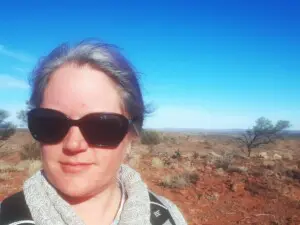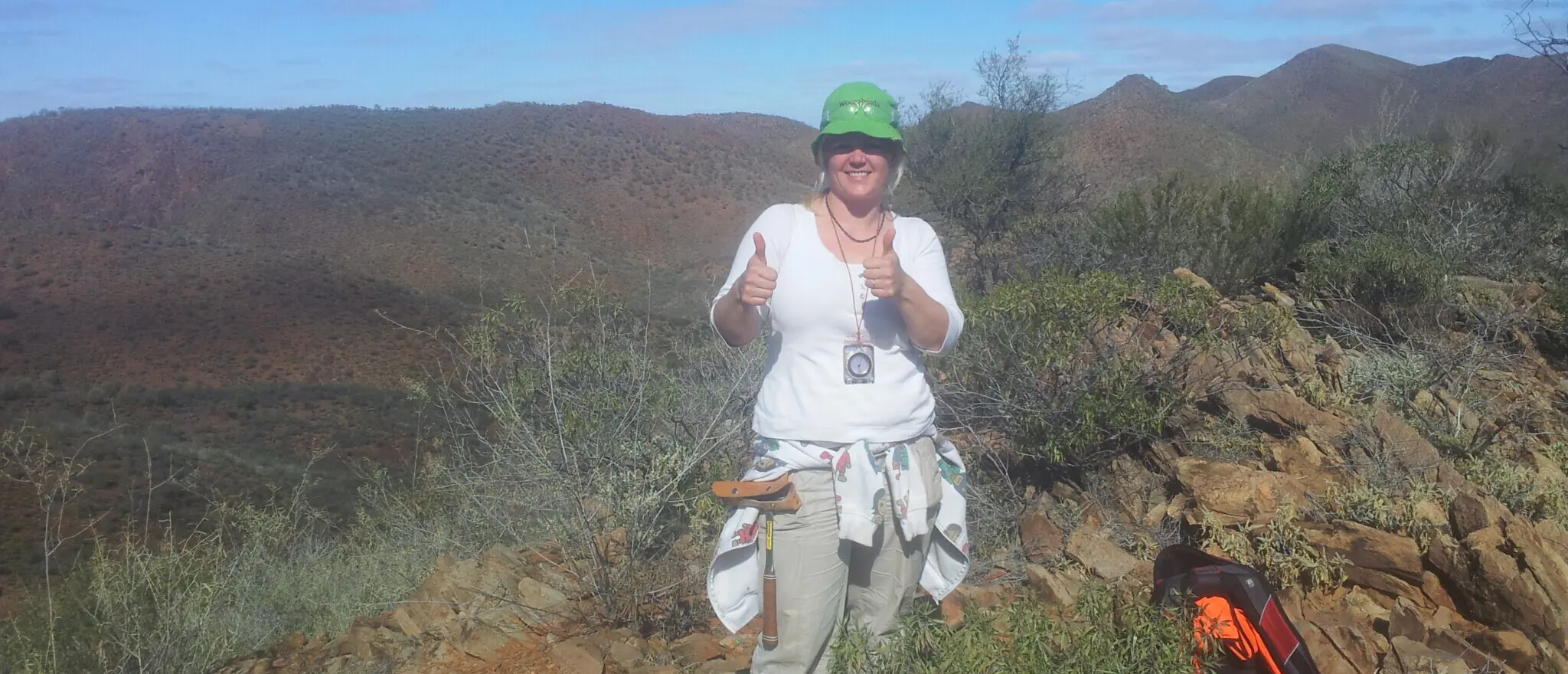Tell us a bit about your background. What brought you to CRC TiME and the field of mine closure and transitions?
During my undergraduate studies in geology, which I loved, I came to understand that while we certainly need mining to maintain and develop our society, we need to do much better when it comes to managing the waste products generated from this industry. I have a small amount of experience in some aspects of mining, and I enjoyed the work, but the lifestyle wasn’t for me.
My true passion lies in discovering what we can achieve in terms of returning highly altered landscapes back to environments that can be safe and productive for future generations. I appreciate the benefits of the mining industry, but I think we need to improve our best practice and clean up as we go regarding tailings waste facilities and end of mine processes.
Professor Thomas Baumgartl is my Principal Supervisor for my PhD research, and it was he who suggested I apply for the CRC TiME top up scholarship. I am looking forward to working with Thomas and Professor Singarayer Florentine, my associate supervisor, as we collaborate with CRC TiME to find ways to solve problems in this space.
I am excited about the opportunities that this scholarship with CRC TiME will provide, especially regarding the potential scope and reach of my research topic.
What topic are you delving into for your PhD?
My research will investigate the effects of the addition of a variety of carbon amendments on mine tailings waste. The aim is to develop a long-term viable growth medium for phytoremediation projects where there is insufficient topsoil available. Alongside this, I am also interested in looking at aged (15yrs+) phytoremediation projects on tailings sites from various orebodies and climates, focusing on which approaches were successful in establishing the intended post mining land use as well as what was not successful and reasons why.
The data and implications gathered from these parallel studies have the potential to inform future methodology regarding how we approach remediation and ultimately the rehabilitation and relinquishment of tailings waste facilities. The ultimate goal is to provide safe and sustainable landscapes ready to return back to the wider environment once mine closure has been finalised.

Julia in the Broken Hill area
Tell us more about carbon sources as substrate amendments?
The input of organic carbon to a mineral substrate is essential to the development of a soil. Using tailings as a substrate for direct revegetation can be problematic as there are many factors involved which make them inhospitable to plant growth; extreme pH, salinity, compaction, water balance and metal toxicity are just a few of these factors. Unfortunately, just adding fertiliser to tailings won’t create a sustainable growth medium for phytoremediation purposes. The use of organic carbon amendments (such as compost, biosolids, biochar, mulch, etc) have been shown to have a positive effect on ameliorating many of the aforementioned issues and I want to determine if/what particular types or combinations of carbon addition can accelerate soil formation processes in tailings waste.
What is the biggest challenge you see, in your field?
The scope of the issues around mine waste in terms of the physical, financial, temporal and social factors is huge. It will only get bigger as ore grades shrink and demands for minerals increase.
Mining is a temporary use of land, but its impacts can be widespread both physically and temporally through the environment. Our challenge is to figure out how to make the best of what is left with what we have, in a way that will be beneficial to whoever uses the land after mining has finished.

